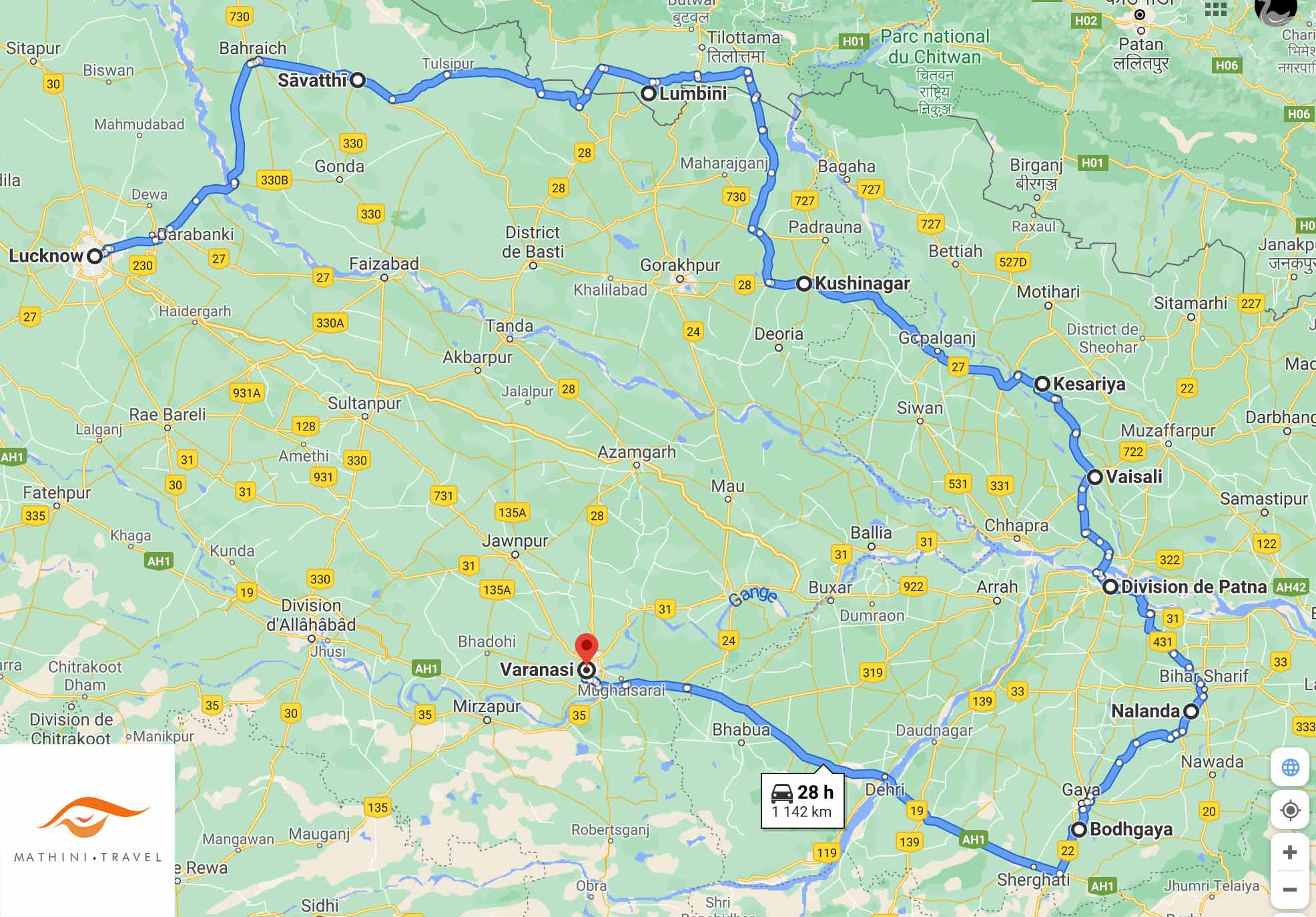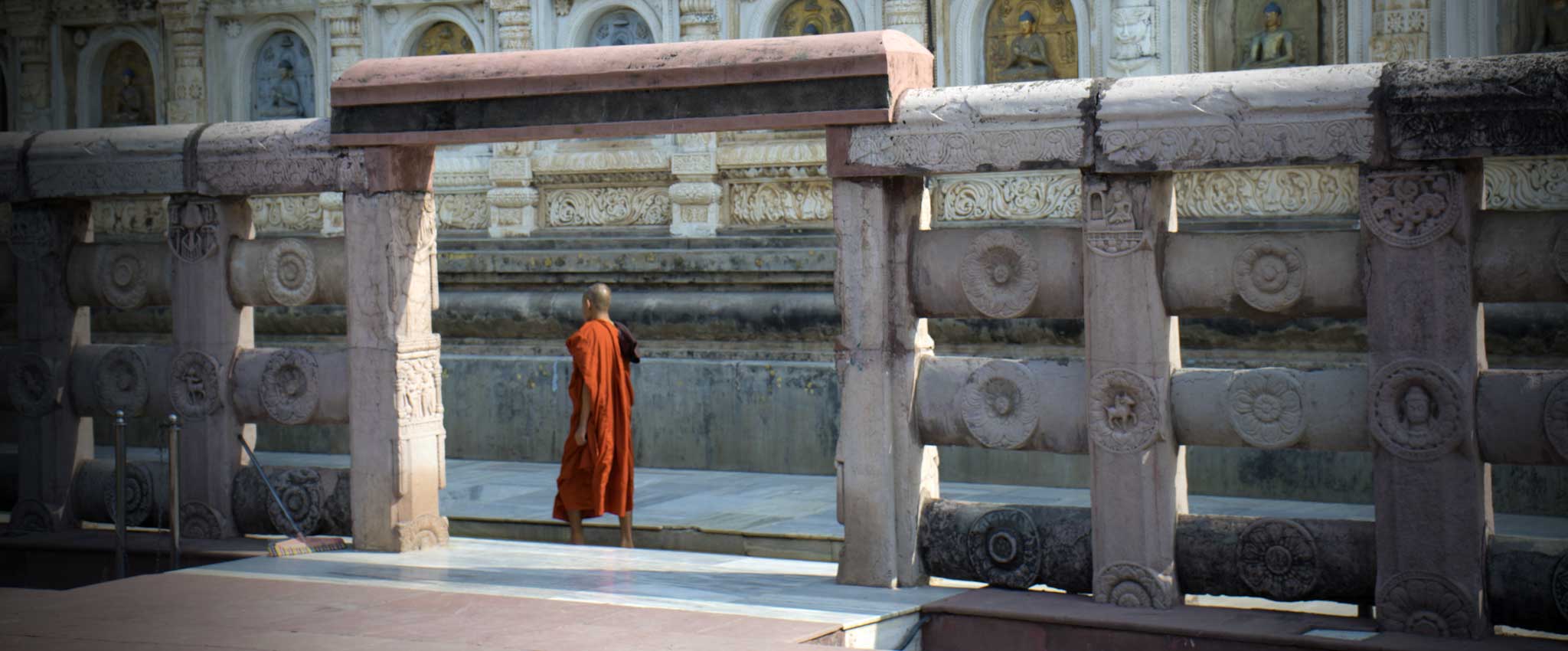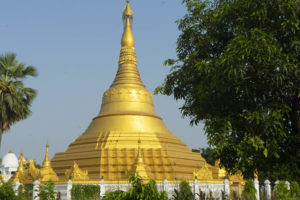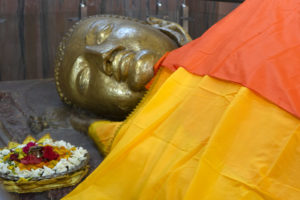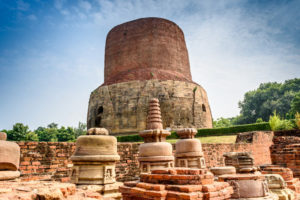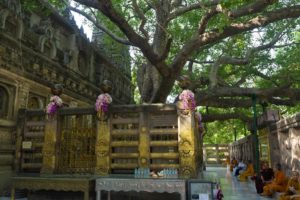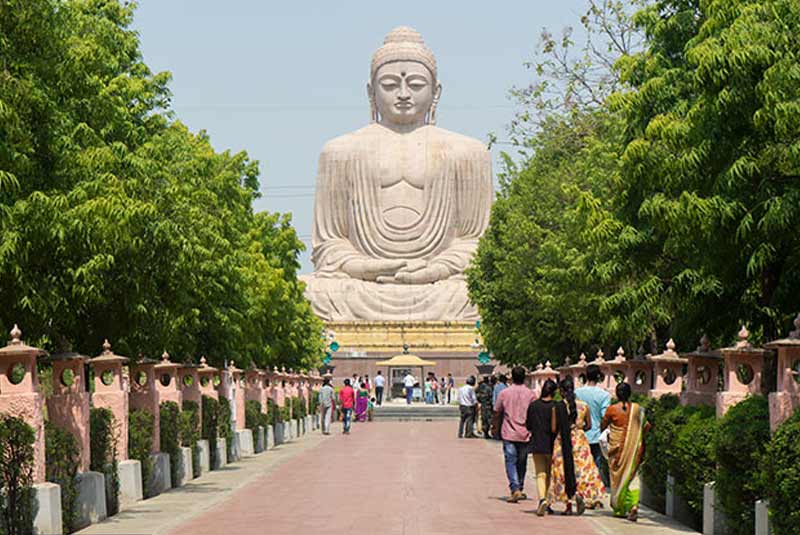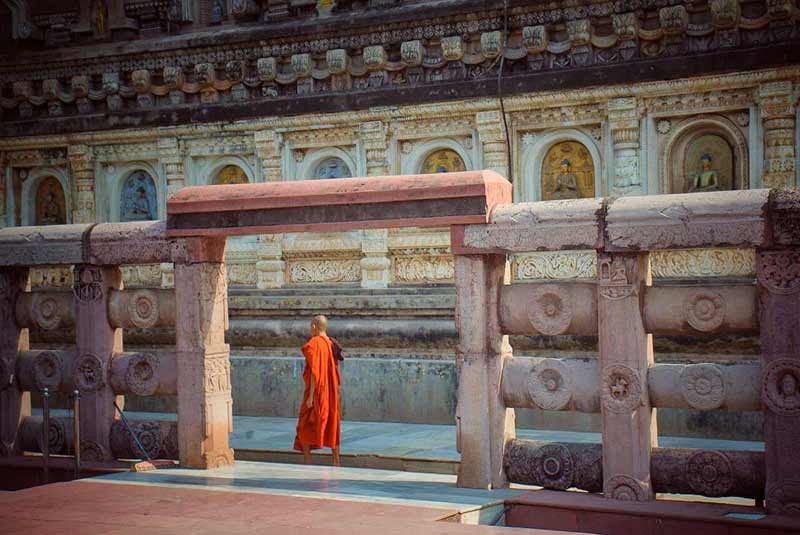Day 1
Lucknow - Shravasti, the 24 rainy seasons of the Buddha
This pilgrimage-trip starts from Lucknow and, from there, we will head to Shravasti, which was the capital of the Kosala kingdom in the 6th century BC. It is said that the Buddha have spent '24 rainy seasons' here and that he gave the greatest number of his speeches there. Legend has it that he performs here the miracle of multiplying himself a million times while sitting on a lotus, the fire and the water emanating from his body. In the afternoon, we will visit the site of Jetavana where we think the first stupa, probably dating from the 3rd century BC, contained relics of the Buddha. Overnight in Shravasti.
Day 2
Shravasti - Lumbini
In the morning, we finish visiting the sites of Shravasti then we leave for Lumbini in Nepal, 30 km from the Indian border. We will cross the Indian-Nepal border at Sunauli and we will complete the formalities required at the immigration offices of India and Nepal. Arrival in Lumbini late afternoon. Lumbini is one of the most sacred places of Buddhism, for it is here that Queen Mayadevi gave birth to Siddhartha Gautama (the future Buddha) in 623 BC. Overnight in Lumbini.
Day 3
Lumbini, birthplace of the Buddha
The archaeological site of Lumbini, a UNESCO World Heritage Site, consists of a pond (Shakya Kund) - where it is said that Queen Mayadevi bathed before the birth of Siddhartha - ruins of ancient monasteries, a pillar erected by Emperor Ashoka in 249 BC and remains of the temple of Mayadevi protected by a building with sober architecture. Inside the Mayadevi temple, a stone marks the exact location of the birth of the Buddha overhung by a stone sculpture depicting the birth of Siddhartha. After the visit of this highly sacred site, we will go and see several Buddhist monasteries built by different countries. Overnight in Lumbini.
Day 4
Lumbini - Kushinagar, the Parinirvana of the Buddha
In the morning, we will finish the visit of the monasteries around the temple of Mayadevi, then we will enter India again, and head to Kushinagar. Kushinagar is one of the four highest places of Buddhism in India together with Bodhgaya, Lumbini and Sarnath; it is said that this is the place where the Buddha reached 'Parinirvana' (physical death). To mark the place of the Parinirvana, the Buddhist emperor Ashoka built a stupa. The kings of the Gupta dynasty (4th-7th century AD) then expanded the building by adding the 6 m long monolithic reclining Buddha that can still be seen today. Overnight in Kushinagar.
Day 5
Kushinagar - Kesariya - Vaishali - Patna
After breakfast, we will visit the Kushinagar Museum, which houses beautiful Buddhist icons, and the 15-meter high Ramabhar stupa that was built to mark the Buddha's cremation site after his nirvana. We will continue our journey in the footsteps of the Buddha by visiting Kesariya, which was where the Buddha spent his last days before his nirvana; he would have given his alms bowl to the Lichchavis people and, to commemorate this moment, they built the stupa Kesariya. We continue our journey and visit Vaishali where the Buddha pronounced his last sermon and announced his Mahaparinirvana (his physical death). Near the Vaishali Museum, there is the stupa where a stone reliquary was discovered that would have contained one-eighth of the Buddha's relics (now preserved in the Patna Museum). Arrival in Patna where we will spend the night.
Day 6
Patna - Nalanda - Bodgaya
After visiting the Patna Museum and some places of interest, we will continue our journey to Bodhgaya after a stop at the archaeological site of Nalanda, a World Heritage Site. Nalanda was one of the first universities in the world that remained active for about 800 years, from the fifth to the twelfth century AD. At its peak, it had up to 2,000 teachers and 10,000 students. At the end of the twelfth century, Nalanda was destroyed by the Mughal invaders. The site still has beautiful vestiges of several monasteries, temples and stupas. Arrival in Bodhgaya late afternoon. Overnight in Bodhgaya.
Day 7
Dungeshwari caves & Sujata kuti Stupa
When Siddhartha Gautama left his kingdom, he shaved his head, put on humble clothes, and led a hermit life marked by severe austerities; he inflicted many mortifications on his body. After 6 years, he realised that submitting his body to physical suffering is not the way to get enlightenment, but, the way of truth is that of the middle: "if the rope is too tight then it breaks, when it's too loose, no sound comes out." It is believed that Buddha stayed in the Dungeshwari Caves near Bodhgaya during this six years of austerities. Choosing the middle path, Siddhartha Gautama put an end to this six years of austerities by accepting kheer (rice pudding) from a young girl, an herdswomen, named Sujata. In memory of this moment, a huge 65 m in diameter stupa in brick was erected, 3 km from Bodhgaya. After visiting these two historic places, we return to Bodhgaya.
Day 8
The Bodhi tree & Mahabodhi Mahavihara temple, the awakening of the Buddha
After the end of the austerities, Siddhartha Gautama continued his spiritual quest. One day, as he was walking, he went to sit under a pipal tree (the Bodhi tree) and resolved not to rise from this place until he had found spiritual awakening. He remained in meditation for 49 days. Then, on the night of the full moon of Vesak (May-June), at the age of 35, he became the 'Buddha', 'awake'. The Bodhi Tree is located in the Mahabodhi Temple Complex, surrounded by high golden barriers. During the seven weeks following his enlightenment, the Buddha remained in meditation in different places around the Bodhi tree; we will visit these places all located in the temple complex. Adjacent to the Bodhi tree stands the Mahabodhi Mahavihara Temple, also known as 'Grand Stupa'. Around the 3rd century BC, 200 years after the Buddha attained enlightenment, the Buddhist emperor Ashoka visited Bodhgaya to built a shrine on the sacred site. Overnight in Bodhgaya.
Day 9
Gaya and monasteries
Around 15 km from Bodhgaya, in the city of Gaya, there is a Hindu temple dedicated to Vishnu on the banks of the Falgu River. We do not know the exact date of its construction but we know that it was renovated by the queen of Indore, Devi Ahilyabai in the 18th century. The temple is not accessible to non-Hindus, but the ghats of the temple where the funerary rites are performed are interesting to observe. In front of the Vishnu temple, crossing the Falgu River, we will visit a set of shrines called 'Sita Kund' dedicated to Vishnu's wife, Sita. There it is said that the goddess performed the 'shraadh', the last funerary rites for her father-in-law, Dasharatha, the king of Ayodhya. Back to Bodhgaya. In the afternoon, visit of the different monasteries around the Mahabodhi temple built by Buddhist missions from different countries (Japan, China, Bhutan, Thailand ..). They reflect the various cultures and styles of Buddhist architecture throughout the world. Overnight in Bodhgaya.
Day 10
Bodhgaya - Varanasi
After this quiet stay in Bodhgaya, departure for Varanasi, the spiritual capital of India. Arrival in the late afternoon. Check in at a guesthouse overlooking the banks of the Ganges. In the evening, walk on the ghats of the city. Overnight in Varanasi.
Day 11
Varanasi, spiritual capital of India
We will begin the visit of Varanasi with a boat ride on the Ganges at sunrise, a pure delight. Then, we will visit the old city and its Kashi Vishwanath Temple, the most revered temple in the city, as it houses one of the 12 'jyotir lingams' or 'lingams of light'. Next door is the Annapurna Temple dedicated to the goddess of abundance. She is the supreme female deity of Varanasi. Going down to 'Lalita Ghat', we will come across a Nepali-style temple, a curiosity in Varanasi. It was built 170 years ago by the king of Nepal Rana Bahadur Shah. In the evening, we will make an another boat ride on the Ganges to observe the cremations held at the Manikarnika Ghat and to attend the ceremony of the arati at the ghat Dashashwamedh. Overnight in Varanasi.
Day 12
Varanasi - Sarnath
After breakfast, we will leave for Sarnath, the last leg of our journey in the footsteps of the Buddha. Sarnath is one of the four highest places of Buddhist pilgrimages. It is said that here, five weeks after his awakening at Bodhgaya, the Buddha gave his first sermon, the Dhammacakkappavattana Sutta or the four noble truths, in order to put the wheel of the dhamma (the universal law) in motion. The stupa Dhamekh marks the place of the first speech. It is a cylindrical brick building more than 40 m high that was erected by the Buddhist king Ashoka in 249 BCE. After visiting the stupa, we will explore the archaeological museum of the city and then we will go and see different monasteries. Return to Varanasi in the late afternoon. Overnight in Varanasi.
Day 13
Flight Varanasi - Delhi
This pilgrimage journey ends in Varanasi. Looking forward to meeting you again. Om Mani Padme Hum!
